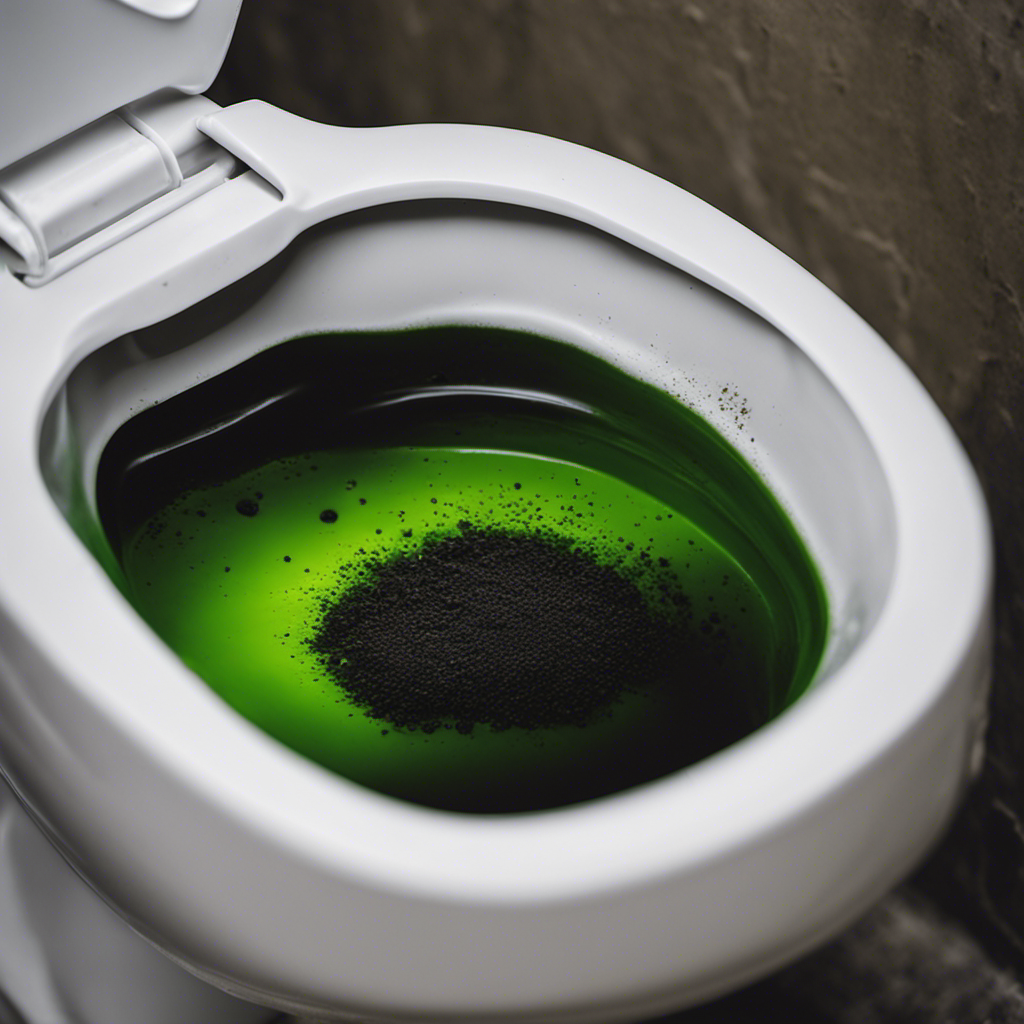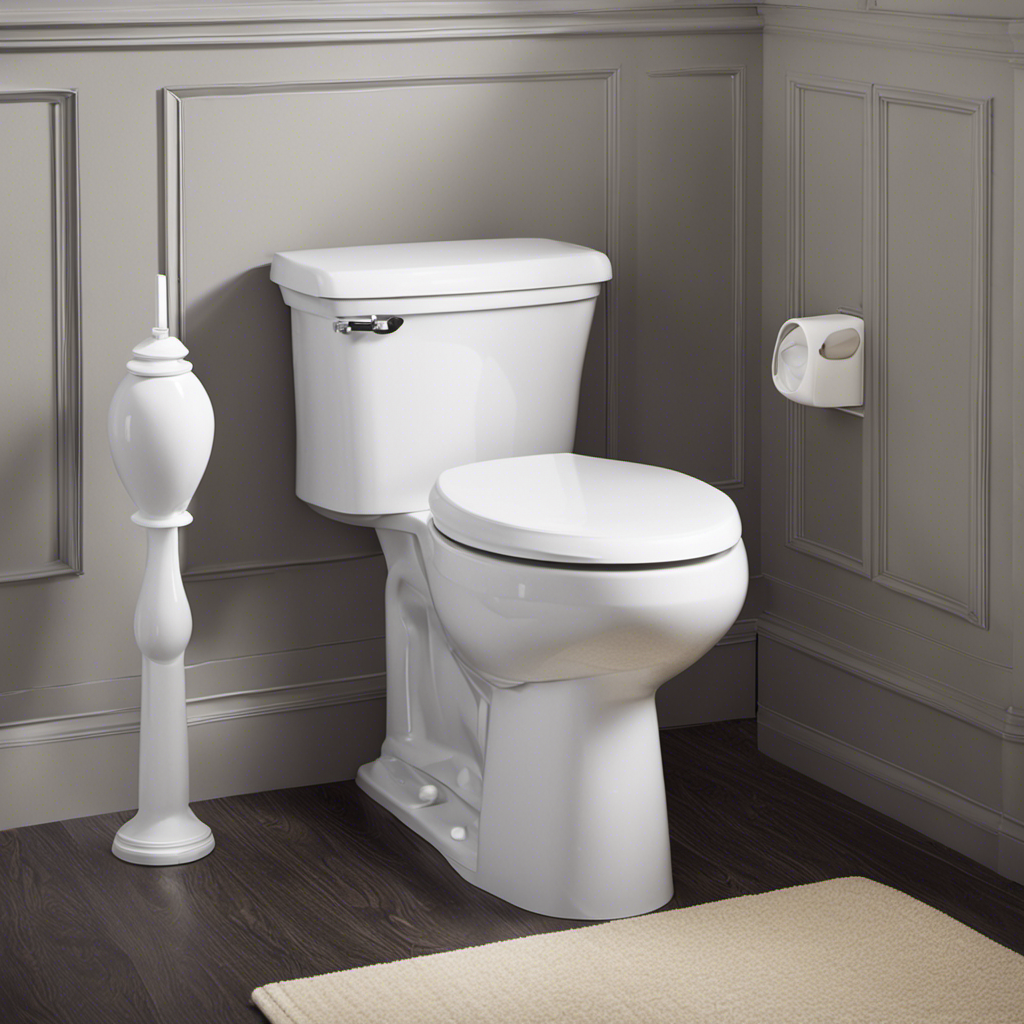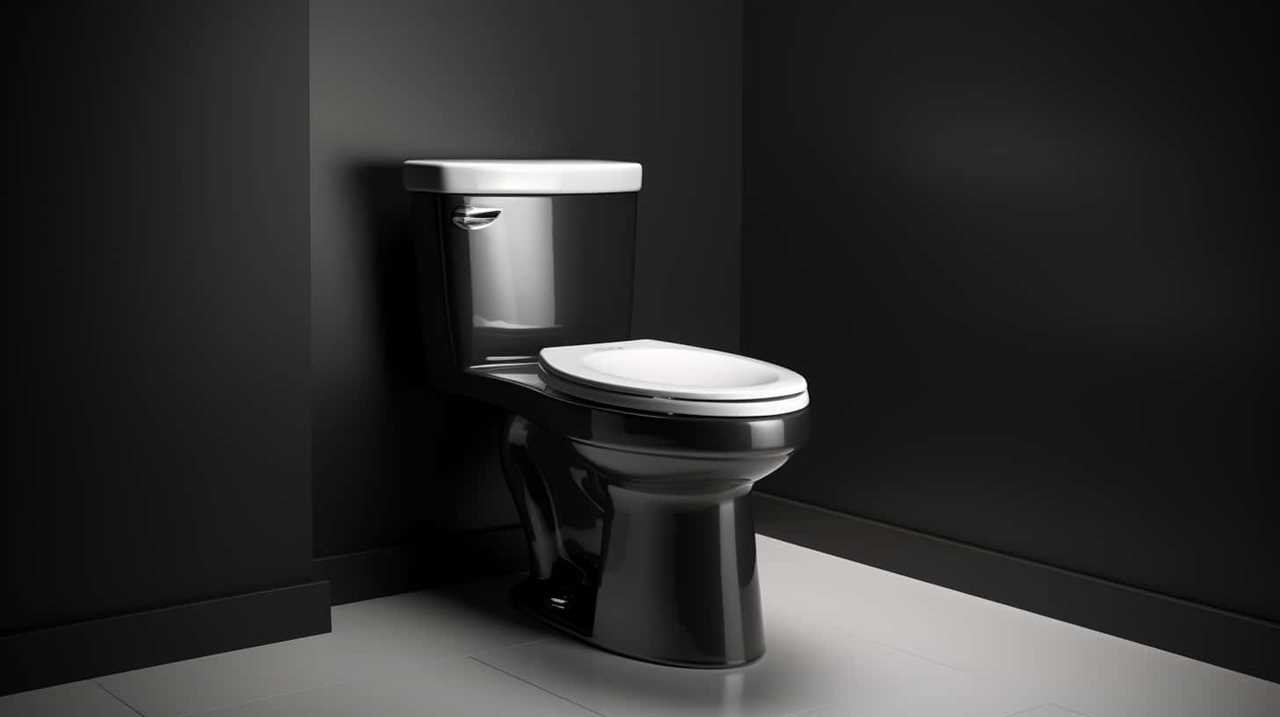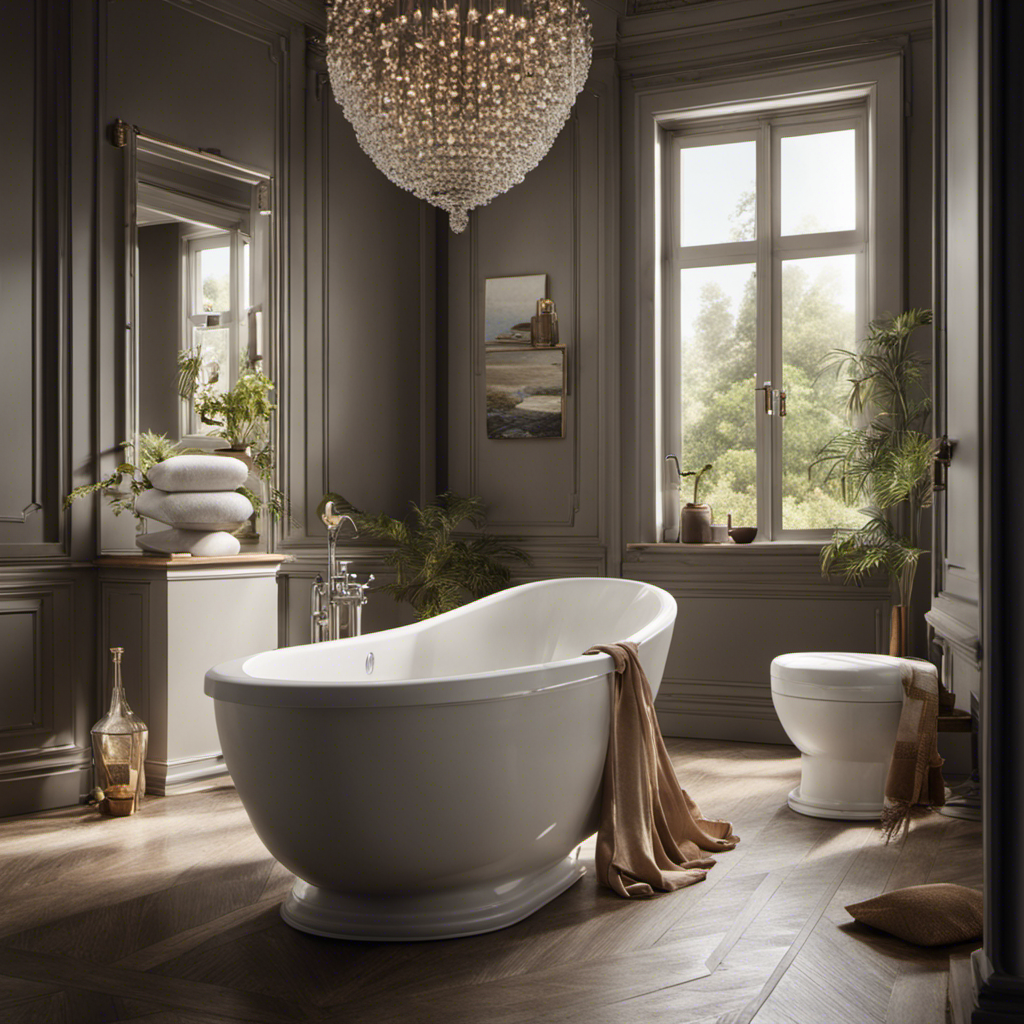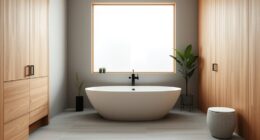I’ve always prided myself on keeping a clean and sanitary home, so imagine my surprise when I discovered mold growing in my toilet bowl. It was a wake-up call that even the most diligent of us can fall victim to this unsightly and potentially harmful problem.
In this article, I will delve into the causes of mold growth in toilet bowls, the health risks associated with it, and most importantly, effective methods to remove and prevent its regrowth.
Let’s tackle this issue head-on and reclaim our clean and healthy bathrooms.
Key Takeaways
- High humidity levels in the bathroom create an ideal environment for mold to thrive.
- Mold in the toilet can trigger allergic reactions and respiratory problems.
- Regular cleaning with disinfectant cleaner and proper ventilation can prevent mold growth.
- If DIY methods are ineffective, seek professional help to eradicate mold and prevent regrowth.
The Causes of Mold Growth in Toilet Bowls
One of the main reasons for mold growth in toilet bowls is the presence of high humidity levels. When moisture accumulates in the bathroom, it creates a perfect environment for mold to thrive.
Mold spores are always present in the air, but they need moisture and a food source to grow. Toilet bowls, with their constant exposure to water and organic matter, provide an ideal breeding ground for mold.
Regular cleaning of the toilet bowl is essential to prevent mold growth. Using a toilet bowl cleaner that contains bleach or a disinfectant can help kill any existing mold and prevent its recurrence.
Common mold types found in toilet bowls include Cladosporium, Alternaria, and Aspergillus. Understanding the causes of mold growth in toilet bowls is crucial to effectively combat this problem and safeguard your health.
Understanding the Health Risks of Toilet Bowl Mold
To understand the health risks of mold in your toilet, you should be aware of the potential dangers it can pose. Mold in your toilet can have several negative health effects, especially if you are exposed to it for prolonged periods of time. Here are some important points to consider:
-
Mold allergies: Exposure to mold in your toilet can trigger allergic reactions in susceptible individuals. Symptoms may include sneezing, coughing, wheezing, and skin irritation.
-
Respiratory problems: Prolonged exposure to mold spores can lead to respiratory issues such as asthma or worsening of existing respiratory conditions.
-
Irritation and inflammation: Mold exposure can cause irritation and inflammation of the eyes, nose, throat, and lungs, leading to discomfort and difficulty breathing.
-
Compromised immune system: Mold exposure can weaken the immune system, making individuals more susceptible to other infections and illnesses.
To manage mold allergies and reduce the health effects of prolonged mold exposure, it is important to regularly clean and disinfect your toilet, ensure proper ventilation in the bathroom, and address any water leaks or moisture issues promptly.
Effective Methods to Remove Mold From Your Toilet Bowl
When cleaning your toilet, make sure you use effective methods to remove the mold from the bowl. Toilet bowl mold can be a persistent and unsightly problem, but with the right approach, you can keep it at bay.
Prevention is key, so start by regularly cleaning your toilet bowl with a disinfectant cleaner to eliminate any existing mold and prevent future growth. Additionally, make sure the bathroom is well-ventilated to minimize moisture buildup.
If you prefer natural remedies, try using a mixture of vinegar and baking soda to remove mold. Simply pour the vinegar into the toilet bowl, let it sit for a few minutes, then scrub with a toilet brush. The acidic properties of vinegar help dissolve the mold, while baking soda acts as a gentle abrasive.
Preventing Mold Regrowth in Your Toilet Bowl
To prevent mold from regrowing in your toilet, regularly clean it with a disinfectant cleaner and ensure proper bathroom ventilation. Here are some additional steps you can take to prevent future mold and keep your toilet bowl clean:
-
Keep the toilet bowl dry: After cleaning, make sure to thoroughly dry the toilet bowl. Mold thrives in moist environments, so reducing moisture levels will help prevent mold growth.
-
Use natural cleaning methods: Instead of relying solely on harsh chemicals, consider using natural cleaning methods. Vinegar and baking soda are effective in removing mold and disinfecting the toilet bowl. Mix equal parts vinegar and water, then apply the solution to the toilet bowl. Let it sit for a few minutes before scrubbing with a toilet brush.
-
Sprinkle baking soda in the toilet bowl and scrub with a brush, then flush to rinse away any residue.
Seeking Professional Help for Persistent Toilet Bowl Mold
If you’re struggling to get rid of persistent mold in your toilet, consider seeking professional help. While there are plenty of DIY mold removal techniques for toilet bowl maintenance, sometimes the mold can be stubborn and resistant to these methods.
This is where a professional can come in handy. They have the knowledge, expertise, and specialized tools to tackle even the toughest mold infestations in your toilet bowl. Professionals can assess the extent of the mold growth, identify the underlying cause, and provide effective solutions to eradicate the mold and prevent its regrowth.
They can also offer valuable advice on proper toilet bowl maintenance to minimize the chances of mold recurring in the future. Don’t let persistent mold in your toilet bowl become a recurring problem, reach out to a professional for assistance.
Conclusion
In conclusion, understanding the causes, health risks, and effective methods to remove mold from your toilet bowl is essential in maintaining a clean and healthy bathroom environment.
By taking proactive steps to prevent mold regrowth and seeking professional help when needed, you can ensure that your toilet bowl remains mold-free.
Remember, mold can be harmful to your health, so it’s important to address the issue promptly.
By following these guidelines, you can enjoy a clean and hygienic toilet bowl that promotes a healthier home.
